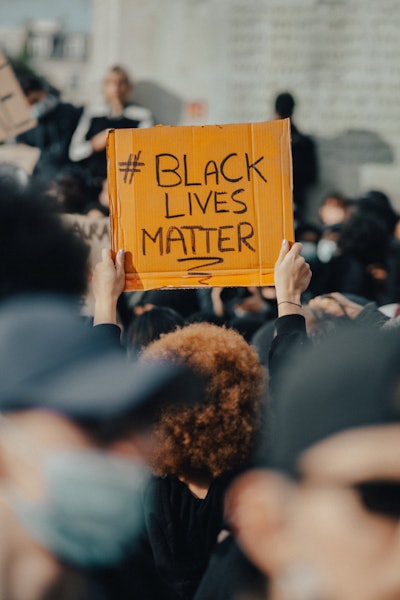In the summer of 2020, many institutions followed the lead of corporations and politicians across the country in espousing a greater commitment to pursuing and achieving racial equity. Many institutions created scholarships named for George Floyd, whose killing by Minneapolis police in May of 2020 sparked a movement for equity that touched every corner of the globe. Others moved to take down statues and memorials to known racists. The University of Minnesota moved swiftly to end its contract with the Minneapolis Police Department two days after Floyd’s death. And many other institutions convened task forces and launched campus climate surveys to investigate the state of affairs for Black students on campus.
 Photo by Thomas de LUZE on Unsplash
Photo by Thomas de LUZE on Unsplash
Dr. Tamara Stevenson, chief diversity officer and vice president of diversity, equity and inclusion at Westminster College in Salt Lake City, Utah, says her overall sense is that some institutions have taken an opportunity to “capitalize on the moment and generate good PR” by espousing a commitment to showing Black lives matter on campus.
“Race is certainly a guiding principle” for students and donors, Stevenson says, who adds the commitment is “not so much” visible operationally. “Students want to attend institutions that are responsive, and not only reactive to issues of diversity. … It also attracts and retains donors and lucrative partnerships,” she says. But when it comes to showing and proving, there hasn’t been a noticeable increase in Black faculty hiring or Black student outcomes across the country.
“Higher ed as a whole, I think, is painfully more aware of the racialized inequities that exist in American colleges and universities, not only in our student enrollments, but in our faculty ranks. Hundreds of years later, the academy is still robustly White and male, and even though there have been efforts over the years, some institution-specific, that needle hasn’t moved very much,” Stevenson says. “I think the circumstances in June 2020 just exacerbated these inequities to the point where higher ed cannot deny these inequities, cannot deny the racial hostility of this country and how it impacts students.”
Some are a bit more optimistic, offering that the impacts of COVID-19 and the challenges of distance learning may have impeded genuine desires to move the needle.
“It’s early, in terms of us looking at progress,” says Dr. Clyde Wilson Pickett, vice chancellor for equity, diversity, and inclusion at the University of Pittsburgh. Pickett — who was hired in July 2020 and immediately changed the name of the office he runs from the Office of Diversity and Inclusion to the Office for Equity, Diversity, and Inclusion — is an example of what he sees as a trend of universities showing their commitment by hiring additional senior diversity officers.




















